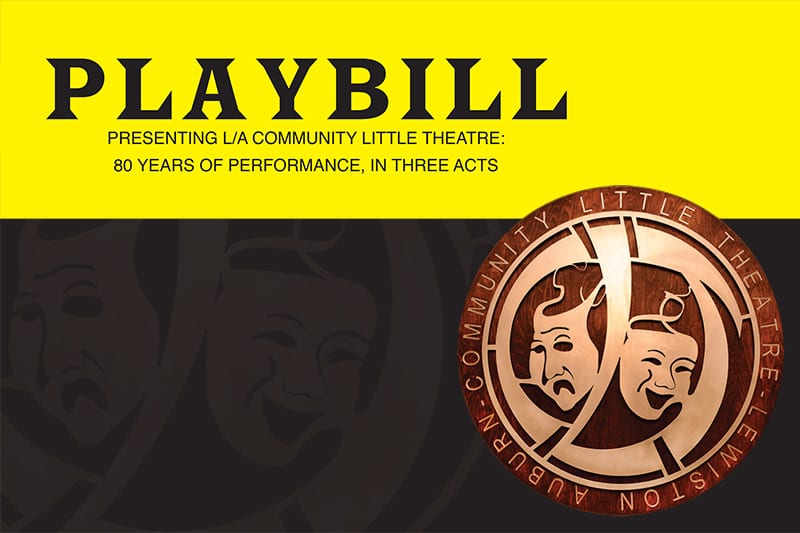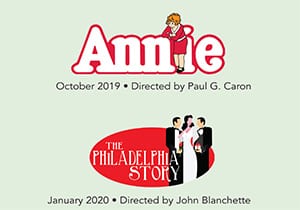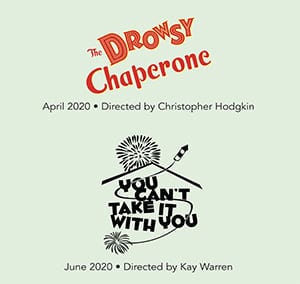Written by Peggy DeBlois | Photography by Jose Leiva
The house lights flicker; it’s time to return to your seat. Before the curtain goes up, marvel at this historic space where over 360 productions have been performed – each one of them by an ensemble of community members, people who work all day and come together as L/A Community Little Theatre in the evenings to make magic. [Cue: music]
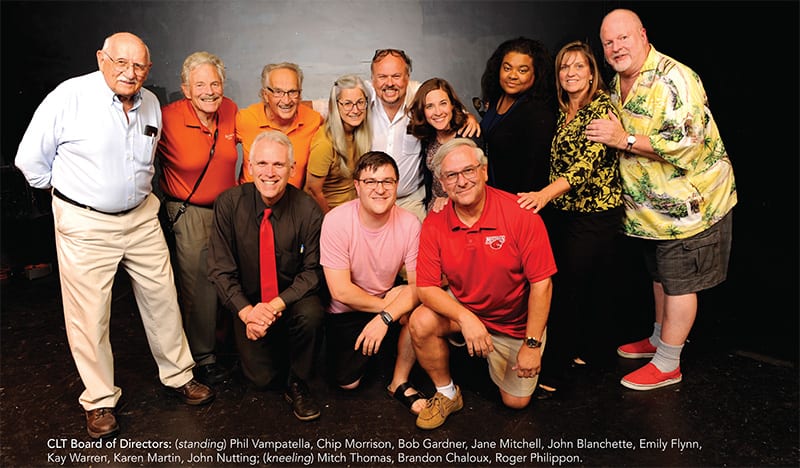
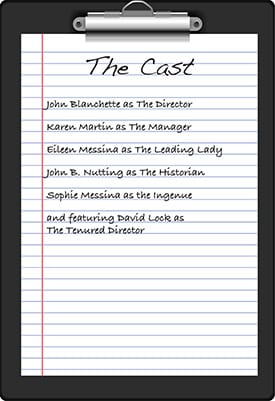 L/A Community Little Theatre (CLT) brings together people from all areas of life who enjoy performing and producing live theater. “Every ensemble is different, and what each has in common is its diversity,” says John Blanchette, current chair and president of the CLT board. “Teachers, contractors, bankers, lawyers, you name a profession and we’ve had it represented here. We are the greatest melting pot in the Twin Cities.”
L/A Community Little Theatre (CLT) brings together people from all areas of life who enjoy performing and producing live theater. “Every ensemble is different, and what each has in common is its diversity,” says John Blanchette, current chair and president of the CLT board. “Teachers, contractors, bankers, lawyers, you name a profession and we’ve had it represented here. We are the greatest melting pot in the Twin Cities.”
Blanchette, who started at CLT in 1983, is celebrating his 30th anniversary as a director. “Our casts typically span the ages, as well. In our recent show, Mamma Mia, we had cast members as young as 15, right through people in their early 70s.”
Cast members typically hail from Androscoggin County, but about a quarter of each cast travel more than 30 minutes to attend rehearsals and performances. “In the theater community, actors tend to travel,” explains Blanchette. “When they see a show they like, it’s not unusual for them to travel an hour or more.”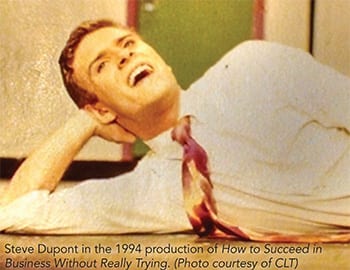
Act One – A brief history
The very first show performed by L/A Community Little Theatre (then called The Community Little Theater Association) was in 1941 in the Edward Little High School auditorium, now known as the Great Falls Performing Arts Center. The comedy Ladies of the Jury had a cast and crew of nearly 50 people.
According to John B. Nutting, member of the board, musicals weren’t performed at CLT until the 1950s, beginning with Kiss Me Kate in 1955. Nowadays, the typical CLT season includes three musicals and two “straight” (nonmusical) plays. Nutting has been working with Judi Moreno, CLT’s recently appointed archivist, to begin the process of cataloguing playbills and photos from the last 80 seasons.
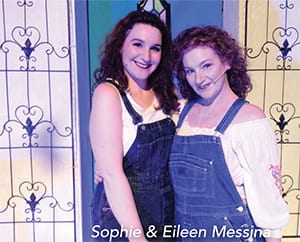 David Lock has the proud distinction of having the longest tenure there: 40 years. Lock started as an actor in the 1972 production of How to Succeed in Business Without Really Trying. The next year, he began his long directing career.
David Lock has the proud distinction of having the longest tenure there: 40 years. Lock started as an actor in the 1972 production of How to Succeed in Business Without Really Trying. The next year, he began his long directing career.
Lock saw a transition over his time with CLT. “When I came into the theater they had some people with good potential, but those lacking experience weren’t allowed to do things. Now it’s a place where everyone is given an opportunity,” he says.
Locke, who retired from his role with CLT seven years ago, last directed A Grand Night For Singing in 2009. While it’s difficult to choose his favorite play, Locke lands on Forever Plaid in 2003 for its dynamic cast. His fondest memories are of seeing his “theater children” and seeing them take their experience and flourish.
Act Two – An opportunity for youth
CLT is very much about family theater, emphasizes Blanchette. “There are multiple generations within families that have been involved here,” he explains, “like Eileen (Messina) and her daughter, Sophie, who were both cast members of Mamma Mia.”
Eileen Messina agrees. When her family moved here in 1975, her parents Dick and Mary Glen Rosenberg had been actively involved in theater in Albany, New York; CLT was actually one reason they chose to live in Auburn.
“We were very lucky to grow up with a wonderful cadre of super talented people who mentored us,” says Messina. She also credits Judy Walker, with the Auburn Parks and Recreation theater program, and local dance instructor Lois Camire, along with her parents, as part of a foundational group providing theater opportunities for local youth.
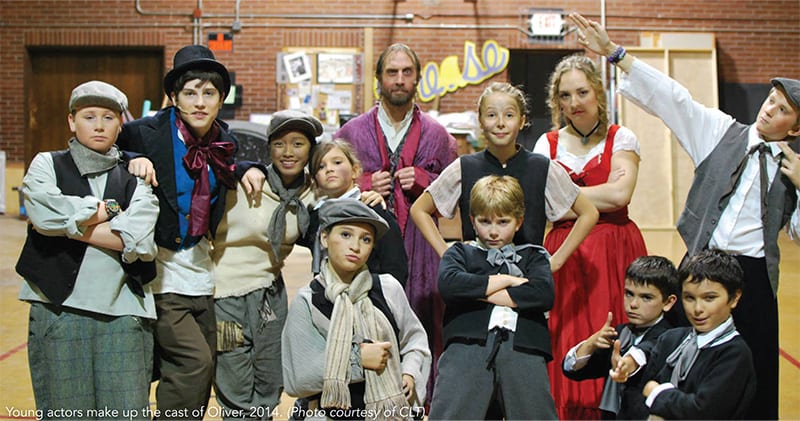
A youth program builds a strong sense of community. As proof, when Messina directed the 75th Anniversary Gala for the L/A Community Little Theater, people returned from all over the country to perform on this local stage again. “My family was one of three that had three generations on that stage,” says Messina.
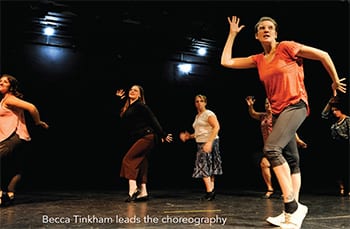 Karen Martin, executive director of CLT, explains the role the theater plays in youth development. “Many young men and women who get involved at CLT develop a real love of theater, and continue on in college and beyond,” says Martin.
Karen Martin, executive director of CLT, explains the role the theater plays in youth development. “Many young men and women who get involved at CLT develop a real love of theater, and continue on in college and beyond,” says Martin.
CLT takes its role as a theater feeder program for youth very seriously, offering four-week summer theater programs for both youth and teens. “The programs are run by teachers, so they are truly geared to learning,” explains Martin. The teen program also helps participants develop leadership skills, as mentors working in the youth program. Each program maxes out with 30-40 participants each year.
Act Three – The future
As L/A Community Little Theatre begins its 80th season of entertaining local audiences, the board is turning its focus to maintaining and improving the Great Falls Performing Arts Center. In 2011, the organization signed a 99-year lease with the City of Auburn for $1 per year, plus all the expenses of maintenance and upkeep. Martin acknowledges it’s been a struggle to put on shows and manage the facility. “We plan to make the space more comfortable, especially for our patrons,” she says.
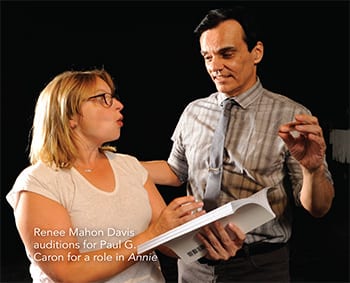 Blanchette agrees that the 80th season is both an opportunity and a challenge. “When we secured the building lease, we got both a blessing and a curse,” says Blanchette. “It’s a 100 year-old building with an antiquated heating system, and no cooling system. We will definitely be doing more fundraising this year.”
Blanchette agrees that the 80th season is both an opportunity and a challenge. “When we secured the building lease, we got both a blessing and a curse,” says Blanchette. “It’s a 100 year-old building with an antiquated heating system, and no cooling system. We will definitely be doing more fundraising this year.”
Over its history, L/A Community Little Theatre has inarguably had an amazing impact on hundreds of people. Like any great script, CLT’s story will certainly have more twists and turns before it’s done. Let’s hope they stay vital for at least another 80 years.
L/A Community Little Theatre
30 Academy Street, Auburn • https://www.laclt.com/
A native of Lewiston, Peggy began writing creatively as a child growing up in a French-Catholic neighborhood. A graduate of Bowdoin College, she began her career in journalism at PC Week in Boston, where she was the ghostwriter for the industry gossip columnist, Spencer the Cat. --
She has also worked locally as an English teacher and public relations consultant. A resident of Auburn, she recently finished her first novel.

